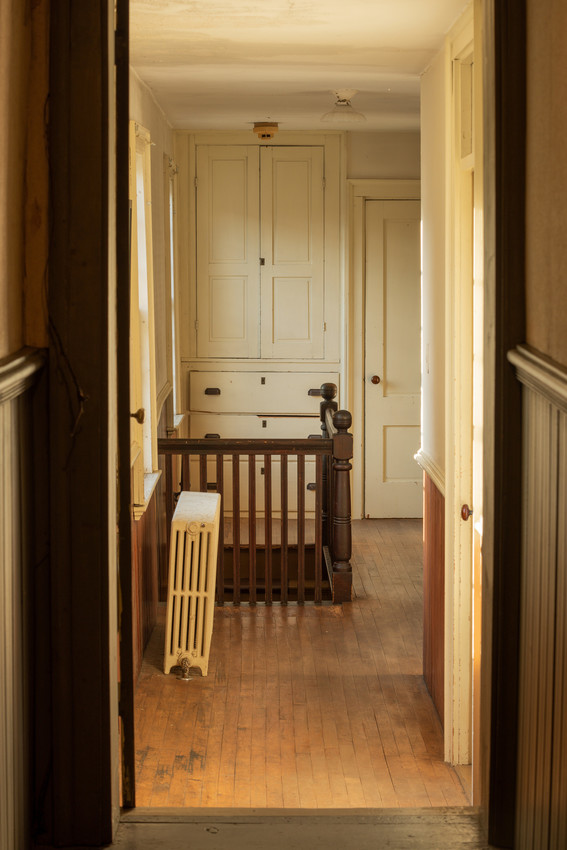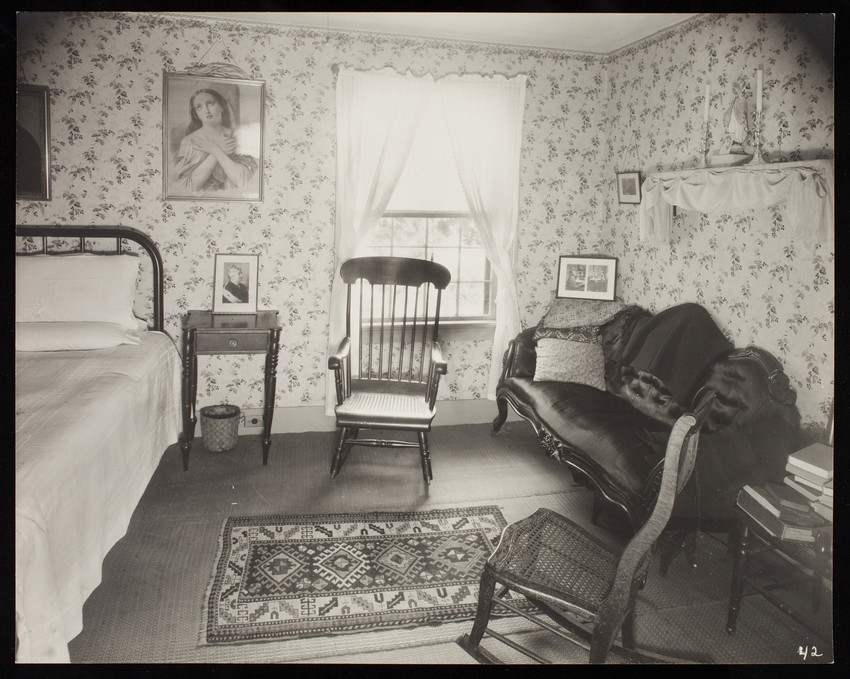 Sarah Orne Jewett House
Sarah Orne Jewett House
Staff Rooms

Two rooms allocated for the cook and the maid are on the right off this hallway. Each room had a fireplace and a window.
Sarah’s letters to family make fond mention of Katy Drinan’s good cooking, Hannah Driscoll’s singing, and Katy Galvin’s insightful words; there seems to have been a familial quality to the servant-family relationship in the Jewett home.
But in the late nineteenth and early twentieth century, staff quarters were about more than a homeowner’s warm feelings toward their servants. In an era when it was becoming increasingly difficult to retain domestic staff due to opportunities less arduous and offering greater freedom elsewhere, providing appealing servant quarters became important.
Homeowners consulted household manuals and articles on domestic service for advice on furnishing, decorating, and maintaining staff rooms to keep their servants content and to maintain household hygiene.
Household experts recommended rooms that were comfortable, easy to clean, and cheerful.
“The old habit of putting them anywhere to work, and in some close or dismal garret to sleep, has justly excited rebellion among these necessary, and now independent, members of our households.” – Henry Hudson Holly, Modern Dwellings in Town and Country Adapted to American Wants and Climate, 1878.
Cook’s Room
This room may have been used by Katy Drinan, the Jewett family cook for many years, until around 1899. Catherine Drinan was probably born in Cork, Ireland, around 1857. Sarah Orne Jewett often refers to Drinan, as “our old cook Katy,” in endearment. In fact, Drinan was roughly eight years younger than Jewett.
Later, the room would have been used by Katy or Mary Galvin, Jewett staff after 1899.
Maid’s Room
Providing an adequate, even pleasant, bedroom was one action homeowners could take to try to retain domestic staff, who, in the latter part of the nineteenth century, were lured away from service by less demanding job opportunities in cities.
Domestic work was hard and encompassed a wide array of duties, including cooking and cleaning, laundry, childcare, gardening, care for the sick, even butchery. The hours were long, as servants were on call even after specific chores were done.
Exterior, Rear
This photograph shows the house ell as it was in 1931. The first-floor ell was built early in the home’s history, as early as 1822, for use as the kitchen; the second floor of the ell was added by Sarah and sister Mary Jewett after 1887, for the addition of second floor staff quarters.
The staff quarters were directly over the kitchen. A set of stairs leading from the kitchen to the staff quarters provided direct access between the two spaces.


